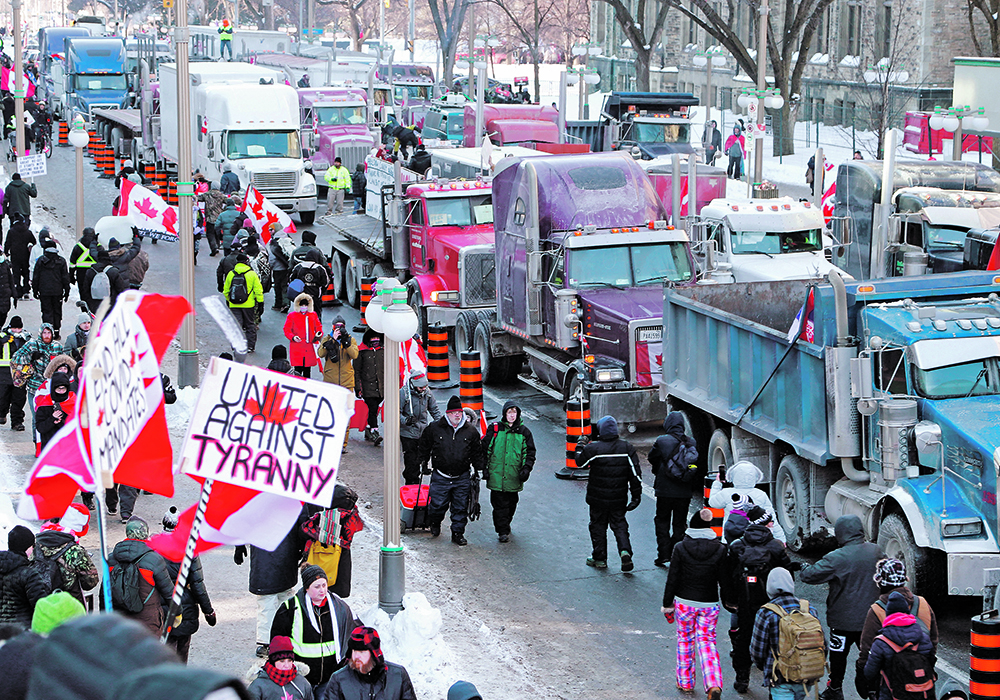The final report by the Public Order Emergency Commission found, with some hesitancy, the federal government’s invocation of the Emergencies Act was justified.
“I have concluded that in this case, the very high threshold for invocation was met,” found commission head Justice Paul Rouleau. “I have done so with reluctance. The state should generally be able to respond to circumstances of urgency without the use of emergency powers.”
However, the confluence of events, despite being centred on the convoy to Ottawa that drew protestors from across Canada to protest against COVID public health restrictions, had been left to spiral out of control nationally — in part because of the actions of protestors as well as the inability for authorities to deal with the situation.
Read Also

Huge Black Sea flax crop to provide stiff competition
Russia and Kazakhstan harvested huge flax crops and will be providing stiff competition in China and the EU.
But Rouleau found the potential for violence by some protesters was real, which played a part in the federal cabinet’s justified rationale to invoke the Emergencies Act as demonstrations spread across the country and border communities.
“The rhetoric of the protests also increasingly began to contemplate violence as part of a desire to achieve policy change over public health measures. Online messaging from protesters in Ottawa, Coutts, and elsewhere suggested that protesters intended to succeed in their cause or die trying,” read the Rouleau report. “Messaging also indicated that any action by police or government would be interpreted as a ‘call to arms.'”
Rouleau cited one of the convoy’s initial foundational documents, a memorandum of understanding by the group Canada Unity, which sought to replace the country’s democratically elected government.
“Concerns such as these took on an additional gravity with the discovery in Coutts of a large cache of weapons and ammunition amassed by protesters with allegedly extremist anti-government views,” Rouleau found, later adding, “there was credible and compelling information supporting a reasonable belief that the definition of threat to the security of Canada was met.”
However, authorities did not escape rebuke for their actions, which challenged the ability of the mostly peaceful protesters involved in exercising their rights to freedom of expression.
“It is regrettable that such a situation arose here, because in my view, it could have been avoided,” found Rouleau. “The response to the Freedom Convoy involved a series of policing failures. Some of the missteps may have been small, but others were significant, and taken together, they contributed to a situation that spun out of control. Lawful protest descended into lawlessness, culminating in a national emergency.”
Regarding both provincial and federal levels of government, Rouleau found, “responding to situations of threat and urgency in a federal system requires governments at all levels, and those who lead them, to rise above politics and collaborate for the common good. Unfortunately, in January and February 2022, this did not always happen.”
Governments and police had enough warnings regarding the potential for a breakdown of social cohesion due to pandemic restrictions that was being fanned by social media, the report found.
“It was the failure to anticipate such a moment and to properly manage the legitimate protests that emerged, especially the protest in Ottawa, that resulted in the 2022 Public Order Emergency,” Rouleau concluded in his report. “Had various police forces and levels of government prepared for and anticipated events of this type and acted differently in response to the situation, the emergency that Canada ultimately faced could likely have been avoided. Unfortunately, it was not.”
The Public Order Emergency Commission held 36 days of public hearings on the invocation of the Emergencies Act between October and December.
Contact alex.mccuaig@producer.com


















